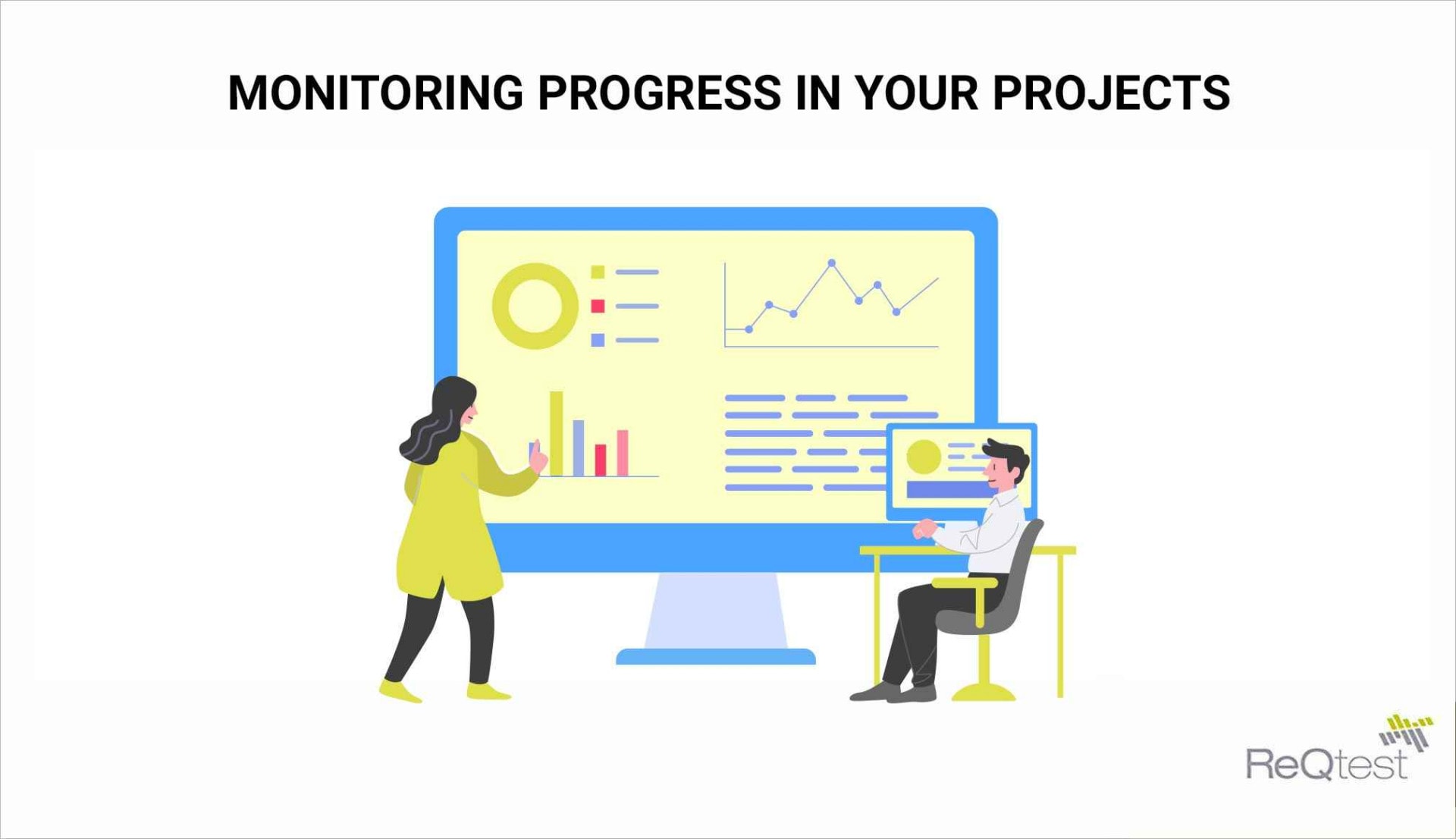November 9, 2020
Monitoring Progress In Your Project – How Important Is It And How To Do It?
Monitoring the progress of a project is necessary to ensure that the project turns out to be successful. Across industries, monitoring is used to keep tabs on certain stages of the project management process, especially when it comes to software development and testing.
Below is an overview of what monitoring progress in a software project involves. We will also discuss how important it is and some ways of how to do it.
The Importance Of Project Monitoring
The success of any project depends on certain key performance indicators (KPIs) being met. The most critical of which is making sure that you complete the project deliverables on time and within the budget.
However, can you imagine trying to carry out all the tasks involved in a project if these haven’t been clearly defined or assigned as tasks to the right people from the beginning and weren’t monitored throughout the project?
Project monitoring gives you an overview of what is going on in different aspects of a project. As you monitor, you also get insights into information such as who is responsible for which of the tasks, and what is the progress on the tasks. Whether everything is as per the deadlines of the assignment and the defined budget or not.
As you can imagine, this is a complex process that needs the involvement of several people to be implemented effectively. However, a dedicated project manager needs to oversee the rollout of the project monitoring process, regardless of whether you approach this from an Agile or more traditional standpoint.
What Do You Need To Monitor?
What you need to monitor throughout a project will depend on the type of project you are carrying out. However, there are several key aspects that you will need to keep a track of. These will help you to make sure that you monitor your progress effectively and that you can ultimately deliver on the key outcomes that were set at the beginning of the project. These project aspects include the following:
● Key performance indicators (KPIs) – These include the overall goals and aims of the project
● Project milestones – Key milestones are important to guide the workflow of your team, especially if the project is going to take an extended amount of time
● Daily, weekly and monthly tasks assigned to key team members – Getting granular with regular tasks will help to structure the monitoring of a project more easily.
● Budget –This is a crucial aspect of monitoring a project so that resources aren’t wasted.
● Time spent – It’s important to make sure that you are optimizing your time throughout the project.
Below, we will detail each of these key elements. This will give you a clearer idea of how to monitor these as part of an effective project management process.
How To Monitor Progress In Your Project Effectively?
The truth is, there are many different ways to approach project monitoring and you will likely need to adjust your approach depending on who you are working on the project for. Overall, however, you can follow the general steps below to help you monitor your project progress effectively.
Step 1: Define the key performance indicators (KPIs) of the project
It is a crucial step in any assignment, especially when it comes to building or testing software. For this reason, it’s essential to work with a business analyst to set out the KPIs of a project at the very beginning.
KPIs should be based on a thorough understanding of the business landscape that your client operates in. Once established, these KPIs will form the core of what you will monitor during the project.
Step 2: Break down the KPIs into project milestones
Once you have the broad outlines of a project, break these down into the relevant phases or steps necessary to complete the project however you see fit.
This will help create a framework for setting project milestones, which will then include all the relevant daily, weekly or monthly tasks that need completing to achieve these milestones.
Step 3: Use a project monitoring tool to collate data
With all of these frameworks in place, you then need to find a way to track all of the data that comes with carrying out all the tasks, project milestones, and KPIs discussed above.
There are several different ways to do this – some online and some manual. Although, it makes sense to collate all of this data, which will be collected on an ongoing basis, into a central dashboard. It helps everyone in the team to access the same information and stay on track.
Step 4: Conduct regular check-ins
Regular check-ins are an essential part of being able to monitor and implement a project effectively. It could involve morning meetings, or even weekly check-ins with your team, to make sure that you can address any problems quickly.
The project manager or a person who has the role of keeping an overview of the project as a whole also needs to make sure that the project milestones are communicated to the client, or relevant stakeholder, on an ongoing basis until all the project requirements are complete.
Final Thoughts
In any project, progress monitoring helps you and your team to stay on track with both the project schedule and budget. Monitoring progress also enables you to pick up on any hiccups early on so that you can find solutions and continue to progress.
As we have mentioned, there are many different approaches to project monitoring. However, by doing your research and setting up adequate frameworks to track KPIs and data, you can effectively keep tabs on your project at all stages. This approach will also help to make sure that the project is delivered on time and within budget.
Share article
